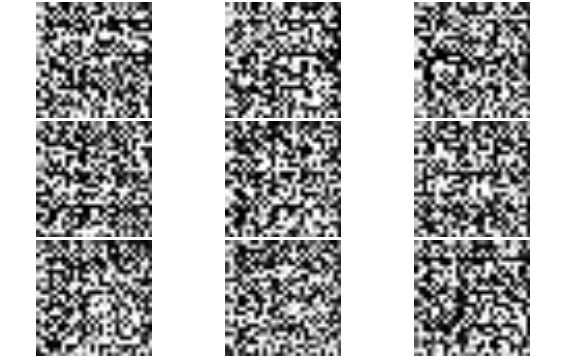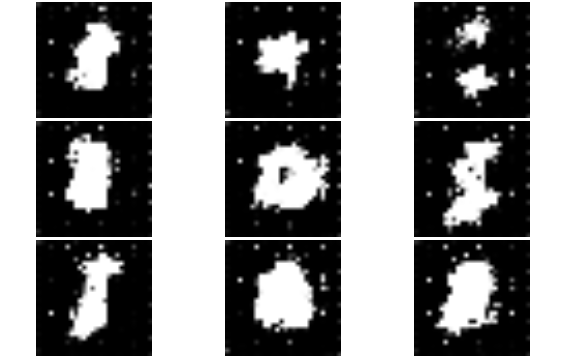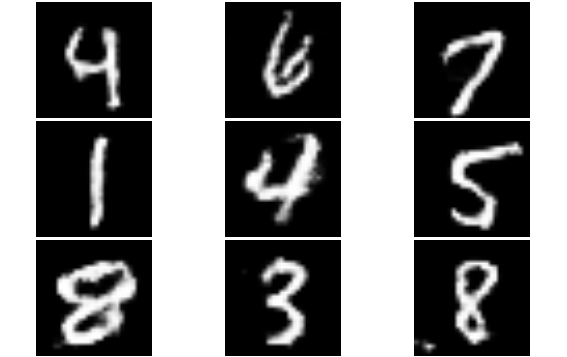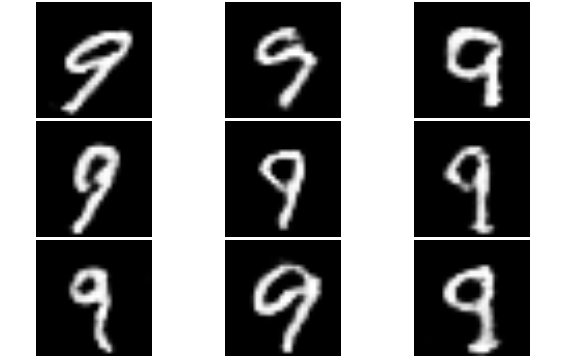This repository has been archived by the owner on Nov 17, 2023. It is now read-only.
-
Notifications
You must be signed in to change notification settings - Fork 6.8k
Fix READMEs for examples #14179
Merged
Merged
Fix READMEs for examples #14179
Changes from all commits
Commits
Show all changes
9 commits
Select commit
Hold shift + click to select a range
9cb2ec2
fixing examples
NRauschmayr 707d60e
fixing examples and adding READMEs
NRauschmayr 8e2ddc4
removing images and fixing spelling mistakes
NRauschmayr 9497e8c
removing images and fixing spelling mistakes
NRauschmayr c8d202f
updating links
NRauschmayr eaee312
Adding license header
NRauschmayr ee04d7f
empty commit
NRauschmayr e4ffd3b
Add missing license headers
NRauschmayr ad8d0f1
Adding changes requested by ChaiBapchya
NRauschmayr File filter
Filter by extension
Conversations
Failed to load comments.
Loading
Jump to
Jump to file
Failed to load files.
Loading
Diff view
Diff view
There are no files selected for viewing
This file contains bidirectional Unicode text that may be interpreted or compiled differently than what appears below. To review, open the file in an editor that reveals hidden Unicode characters.
Learn more about bidirectional Unicode characters
This file contains bidirectional Unicode text that may be interpreted or compiled differently than what appears below. To review, open the file in an editor that reveals hidden Unicode characters.
Learn more about bidirectional Unicode characters
| Original file line number | Diff line number | Diff line change |
|---|---|---|
| @@ -0,0 +1,168 @@ | ||
| <!--- Licensed to the Apache Software Foundation (ASF) under one --> | ||
| <!--- or more contributor license agreements. See the NOTICE file --> | ||
| <!--- distributed with this work for additional information --> | ||
| <!--- regarding copyright ownership. The ASF licenses this file --> | ||
| <!--- to you under the Apache License, Version 2.0 (the --> | ||
| <!--- "License"); you may not use this file except in compliance --> | ||
| <!--- with the License. You may obtain a copy of the License at --> | ||
|
|
||
| <!--- http://www.apache.org/licenses/LICENSE-2.0 --> | ||
|
|
||
| <!--- Unless required by applicable law or agreed to in writing, --> | ||
| <!--- software distributed under the License is distributed on an --> | ||
| <!--- "AS IS" BASIS, WITHOUT WARRANTIES OR CONDITIONS OF ANY --> | ||
| <!--- KIND, either express or implied. See the License for the --> | ||
| <!--- specific language governing permissions and limitations --> | ||
| <!--- under the License. --> | ||
|
|
||
| # Conditional Generative Adversarial Network with MXNet R package | ||
|
|
||
| This tutorial shows how to build and train a Conditional Generative Adversarial Network (CGAN) on MNIST images. | ||
|
|
||
| ## How GAN works | ||
| A Generative Adversarial Model simultaneously trains two models: a generator that learns to output fake samples from an unknown distribution and a discriminator that learns to distinguish fake from real samples. | ||
|
|
||
| The CGAN is a conditional variation of the GAN where the generator is instructed to generate a real sample having specific characteristics rather than a generic sample from full distribution. Such condition could be the label associated with an image like in this tutorial or a more detailed tag as shown in the example below: | ||
|
|
||
| ![Image credit: (Scott Reed)[https://github.com/reedscot/icml2016]](https://raw.githubusercontent.com/dmlc/web-data/master/mxnet/example/gan/CGAN_mnist_R/dcgan_network.jpg) | ||
|
|
||
| ## Initial setup | ||
|
|
||
| The following packages are needed to run the tutorial: | ||
|
|
||
| ``` | ||
| require("imager") | ||
| require("dplyr") | ||
| require("readr") | ||
| require("mxnet") | ||
| ``` | ||
|
|
||
| The full demo is comprised of the two following scripts: | ||
|
|
||
| ```CGAN_mnist_setup.R```: prepare data and define the model structure | ||
| ```CGAN_train.R```: execute the training | ||
|
|
||
| ## Data preperation | ||
|
|
||
| The MNIST dataset is available [here](https://www.kaggle.com/c/digit-recognizer/data)). Once train.csv is downloaded into the data/ folder, we can import into R. | ||
|
|
||
| ```train <- read_csv('data/train.csv') | ||
| train <- data.matrix(train) | ||
|
|
||
| train_data <- train[,-1] | ||
| train_data <- t(train_data/255*2-1) | ||
| train_label <- as.integer(train[,1]) | ||
|
|
||
| dim(train_data) <- c(28, 28, 1, ncol(train_data)) | ||
| ``` | ||
| Custom iterators are defined in ```iterators.R``` and imported by ```CGAN_mnist_setup.R``` | ||
|
|
||
| ## Generator | ||
| The generator is a network that creates novel samples (MNIST images) from 2 inputs: | ||
|
|
||
| - Noise vector | ||
| - Labels defining the object condition (which digit to produce) | ||
|
|
||
| The noise vector provides the building blocks to the Generator model, which will learns how to structure that noise into a sample. The mx.symbol.Deconvolution operator is used to upsample the initial input from a 1x1 shape up to a 28x28 image. | ||
|
|
||
| The information on the label for which to generate a fake sample is provided by a one-hot encoding of the label indices that is appended to the random noise. For MNIST, the 0-9 indices are therefore converted into a binary vector of length 10. More complex applications would require embeddings rather than simple one-hot to encode the condition. | ||
|
|
||
| ## Discriminator | ||
| The discriminator attempts to distinguish between fake samples produced by the generator and real ones sampled from MNIST training data. | ||
|
|
||
| In a conditional GAN, the labels associated with the samples are also provided to the Discriminator. In this demo, this information is again provided as a hot-hot encoding of the label that is broadcast to match the image dimensions (10 -> 28x28x10). | ||
|
|
||
| ## Training logic | ||
| The training process of the discriminator is most obvious: the loss is simple a binary TRUE/FALSE response and that loss is propagated back into the CNN network. It can therefore be understood as a simple binary classification problem. | ||
|
|
||
| ```### Train loop on fake | ||
| mx.exec.update.arg.arrays(exec_D, arg.arrays = | ||
| list(data=D_data_fake, digit=D_digit_fake, label=mx.nd.array(rep(0, batch_size))), | ||
| match.name=TRUE) | ||
| mx.exec.forward(exec_D, is.train=T) | ||
| mx.exec.backward(exec_D) | ||
| update_args_D<- updater_D(weight = exec_D$ref.arg.arrays, grad = exec_D$ref.grad.arrays) | ||
| mx.exec.update.arg.arrays(exec_D, update_args_D, skip.null=TRUE) | ||
|
|
||
| ### Train loop on real | ||
| mx.exec.update.arg.arrays(exec_D, arg.arrays = | ||
| list(data=D_data_real, digit=D_digit_real, label=mx.nd.array(rep(1, batch_size))), | ||
| match.name=TRUE) | ||
| mx.exec.forward(exec_D, is.train=T) | ||
| mx.exec.backward(exec_D) | ||
| update_args_D<- updater_D(weight = exec_D$ref.arg.arrays, grad = exec_D$ref.grad.arrays) | ||
| mx.exec.update.arg.arrays(exec_D, update_args_D, skip.null=TRUE) | ||
| ``` | ||
|
|
||
| The generator loss comes from the backpropagation of the the discriminator loss into its generated output. By faking the generator labels to be real samples into the discriminator, the discriminator back-propagated loss provides the generator with the information on how to best adapt its parameters to trick the discriminator into believing the fake samples are real. | ||
|
|
||
| This requires to backpropagate the gradients up to the input data of the discriminator (whereas this input gradient is typically ignored in vanilla feedforward network). | ||
|
|
||
| ```### Update Generator weights - use a seperate executor for writing data gradients | ||
| exec_D_back <- mxnet:::mx.symbol.bind(symbol = D_sym, | ||
| arg.arrays = exec_D$arg.arrays, | ||
| aux.arrays = exec_D$aux.arrays, grad.reqs = rep("write", length(exec_D$arg.arrays)), | ||
| ctx = devices) | ||
|
|
||
| mx.exec.update.arg.arrays(exec_D_back, arg.arrays = | ||
| list(data=D_data_fake, digit=D_digit_fake, label=mx.nd.array(rep(1, batch_size))), | ||
| match.name=TRUE) | ||
| mx.exec.forward(exec_D_back, is.train=T) | ||
| mx.exec.backward(exec_D_back) | ||
| D_grads <- exec_D_back$ref.grad.arrays$data | ||
| mx.exec.backward(exec_G, out_grads=D_grads) | ||
|
|
||
| update_args_G <- updater_G(weight = exec_G$ref.arg.arrays, grad = exec_G$ref.grad.arrays) | ||
| mx.exec.update.arg.arrays(exec_G, update_args_G, skip.null=TRUE) | ||
| ``` | ||
|
|
||
| The above training steps are executed in the ```CGAN_train.R``` script. | ||
|
|
||
| ## Monitor the training | ||
|
|
||
| During training, the [imager](http://dahtah.github.io/imager/) package facilitates the visual quality assessment of the fake samples. | ||
|
|
||
| ```if (iteration==1 | iteration %% 100==0){ | ||
| par(mfrow=c(3,3), mar=c(0.1,0.1,0.1,0.1)) | ||
| for (i in 1:9) { | ||
| img <- as.array(exec_G$ref.outputs$G_sym_output)[,,,i] | ||
| plot(as.cimg(img), axes=F) | ||
| } | ||
| } | ||
| ``` | ||
| Below are samples obtained at different stage of the training. | ||
|
|
||
| Starting from noise: | ||
|
|
||
|  | ||
|
|
||
| Slowly getting it - iteration 200: | ||
|
|
||
|  | ||
|
|
||
| Generate specified digit images on demand - iteration 2400: | ||
|
|
||
|  | ||
|
|
||
| ## Inference | ||
|
|
||
| Once the model is trained, synthetic images of the desired digit can be produced by feeding the generator with fixed labels rather than the randomly generated ones used during the training. | ||
|
|
||
| Here we will generate fake ```9```: | ||
|
|
||
| ```digit <- mx.nd.array(rep(9, times=batch_size)) | ||
| data <- mx.nd.one.hot(indices = digit, depth = 10) | ||
| data <- mx.nd.reshape(data = data, shape = c(1,1,-1, batch_size)) | ||
|
|
||
| exec_G <- mx.simple.bind(symbol = G_sym, data=data_shape_G, ctx = devices, grad.req = "null") | ||
| mx.exec.update.arg.arrays(exec_G, G_arg_params, match.name=TRUE) | ||
| mx.exec.update.arg.arrays(exec_G, list(data=data), match.name=TRUE) | ||
| mx.exec.update.aux.arrays(exec_G, G_aux_params, match.name=TRUE) | ||
|
|
||
| mx.exec.forward(exec_G, is.train=F) | ||
| ``` | ||
|  | ||
|
|
||
| Further details of the CGAN methodology can be found in the paper [Generative Adversarial Text to Image Synthesis](https://arxiv.org/abs/1605.05396). | ||
|
|
||
|
|
This file contains bidirectional Unicode text that may be interpreted or compiled differently than what appears below. To review, open the file in an editor that reveals hidden Unicode characters.
Learn more about bidirectional Unicode characters
| Original file line number | Diff line number | Diff line change |
|---|---|---|
| @@ -0,0 +1,61 @@ | ||
| <!--- Licensed to the Apache Software Foundation (ASF) under one --> | ||
| <!--- or more contributor license agreements. See the NOTICE file --> | ||
| <!--- distributed with this work for additional information --> | ||
| <!--- regarding copyright ownership. The ASF licenses this file --> | ||
| <!--- to you under the Apache License, Version 2.0 (the --> | ||
| <!--- "License"); you may not use this file except in compliance --> | ||
| <!--- with the License. You may obtain a copy of the License at --> | ||
|
|
||
| <!--- http://www.apache.org/licenses/LICENSE-2.0 --> | ||
|
|
||
| <!--- Unless required by applicable law or agreed to in writing, --> | ||
| <!--- software distributed under the License is distributed on an --> | ||
| <!--- "AS IS" BASIS, WITHOUT WARRANTIES OR CONDITIONS OF ANY --> | ||
| <!--- KIND, either express or implied. See the License for the --> | ||
| <!--- specific language governing permissions and limitations --> | ||
| <!--- under the License. --> | ||
|
|
||
| # Actor Critic Model | ||
|
|
||
| This example shows an actor critic model that consists of a critic that measures how good an action taken is and an actor that controls the agent's behavior. | ||
| In our example actor and critic use the same model: | ||
|
|
||
| ``` | ||
| class Policy(gluon.Block): | ||
| def __init__(self, **kwargs): | ||
| super(Policy, self).__init__(**kwargs) | ||
| with self.name_scope(): | ||
| self.dense = nn.Dense(16, in_units=4, activation='relu') | ||
| self.action_pred = nn.Dense(2, in_units=16) | ||
| self.value_pred = nn.Dense(1, in_units=16) | ||
|
|
||
| def forward(self, x): | ||
| x = self.dense(x) | ||
| probs = self.action_pred(x) | ||
| values = self.value_pred(x) | ||
| return F.softmax(probs), values | ||
| ``` | ||
| The example uses [Gym](https://gym.openai.com/docs/), which is a toolkit for developing and comparing reinforcement learning algorithms. The model is running an instance of [CartPole-v0](https://gym.openai.com/envs/CartPole-v0/) that simulates a pole that is attached by an un-actuated joint to a cart, which moves along a frictionless track. The goal is to prevent it from falling over. | ||
|
|
||
|
|
||
| The example provides the following commandline options: | ||
| ``` | ||
| MXNet actor-critic example | ||
|
|
||
| optional arguments: | ||
| -h, --help show this help message and exit | ||
| --gamma G discount factor (default: 0.99) | ||
| --seed N random seed (default: 1) | ||
| --render render the environment | ||
| --log-interval N interval between training status logs (default: 10) | ||
|
|
||
| ``` | ||
|
|
||
| To run the model execute, type | ||
| ``` | ||
| python actor_critic.py --render | ||
| ``` | ||
|
|
||
| You will get an output like the following: | ||
|  | ||
|
|
This file contains bidirectional Unicode text that may be interpreted or compiled differently than what appears below. To review, open the file in an editor that reveals hidden Unicode characters.
Learn more about bidirectional Unicode characters
| Original file line number | Diff line number | Diff line change |
|---|---|---|
| @@ -0,0 +1,115 @@ | ||
| <!--- Licensed to the Apache Software Foundation (ASF) under one --> | ||
| <!--- or more contributor license agreements. See the NOTICE file --> | ||
| <!--- distributed with this work for additional information --> | ||
| <!--- regarding copyright ownership. The ASF licenses this file --> | ||
| <!--- to you under the Apache License, Version 2.0 (the --> | ||
| <!--- "License"); you may not use this file except in compliance --> | ||
| <!--- with the License. You may obtain a copy of the License at --> | ||
|
|
||
| <!--- http://www.apache.org/licenses/LICENSE-2.0 --> | ||
|
|
||
| <!--- Unless required by applicable law or agreed to in writing, --> | ||
| <!--- software distributed under the License is distributed on an --> | ||
| <!--- "AS IS" BASIS, WITHOUT WARRANTIES OR CONDITIONS OF ANY --> | ||
| <!--- KIND, either express or implied. See the License for the --> | ||
| <!--- specific language governing permissions and limitations --> | ||
| <!--- under the License. --> | ||
|
|
||
| # Urban Sounds Classification in MXNet Gluon | ||
|
|
||
| This example provides an end-to-end pipeline for a common datahack competition - [Urban Sounds Classification Example](https://datahack.analyticsvidhya.com/contest/practice-problem-urban-sound-classification/). | ||
|
|
||
| After logging in, the data set can be downloaded. | ||
| The details of the dataset and the link to download it are given below: | ||
|
|
||
|
|
||
| ## Urban Sounds Dataset: | ||
| ### Description | ||
| The dataset contains 8732 wav files which are audio samples(<= 4s)) of street sounds like engine_idling, car_horn, children_playing, dog_barking and so on. | ||
| The task is to classify these audio samples into one of the following 10 labels: | ||
| ``` | ||
| siren, | ||
| street_music, | ||
| drilling, | ||
| dog_bark, | ||
| children_playing, | ||
| gun_shot, | ||
| engine_idling, | ||
| air_conditioner, | ||
| jackhammer, | ||
| car_horn | ||
| ``` | ||
|
|
||
| To be able to run this example: | ||
|
|
||
| 1. `pip install -r requirements.txt` | ||
|
|
||
| If you are in the directory where the requirements.txt file lies, | ||
| this step installs the required libraries to run the example. | ||
| The main dependency that is required is: Librosa. | ||
| The version used to test the example is: `0.6.2` | ||
| For more details, refer here: | ||
| https://librosa.github.io/librosa/install.html | ||
|
|
||
| 2. Download the dataset(train.zip, test.zip) required for this example from the location: | ||
| https://drive.google.com/drive/folders/0By0bAi7hOBAFUHVXd1JCN3MwTEU | ||
|
|
||
| 3. Extract both the zip archives into the **current directory** - after unzipping you would get 2 new folders namely, | ||
| **Train** and **Test** and two csv files - **train.csv**, **test.csv** | ||
|
|
||
| Assuming you are in a directory *"UrbanSounds"*, after downloading and extracting train.zip, the folder structure should be: | ||
|
|
||
| ``` | ||
| UrbanSounds | ||
| - Train | ||
| - 0.wav, 1.wav ... | ||
| - train.csv | ||
| - train.py | ||
| - predict.py ... | ||
| ``` | ||
|
|
||
| 4. Apache MXNet is installed on the machine. For instructions, go to the link: https://mxnet.incubator.apache.org/install/ | ||
|
|
||
|
|
||
|
|
||
| For information on the current design of how the AudioFolderDataset is implemented, refer below: | ||
| https://cwiki.apache.org/confluence/display/MXNET/Gluon+-+Audio | ||
|
|
||
| ### Usage | ||
|
|
||
| For training: | ||
|
|
||
| - Arguments | ||
|
There was a problem hiding this comment. Choose a reason for hiding this commentThe reason will be displayed to describe this comment to others. Learn more. is there a |
||
| - train : The folder/directory that contains the audio(wav) files locally. Default = "./Train" | ||
| - csv: The file name of the csv file that contains audio file name to label mapping. Default = "train.csv" | ||
| - epochs : Number of epochs to train the model. Default = 30 | ||
| - batch_size : The batch size for training. Default = 32 | ||
|
|
||
|
|
||
| ###### To use the default arguments, use: | ||
| ``` | ||
| python train.py | ||
| ``` | ||
| or | ||
|
|
||
| ###### To pass command-line arguments for training data directory, epochs, batch_size, csv file name, use : | ||
| ``` | ||
| python train.py --train ./Train --csv train.csv --batch_size 32 --epochs 30 | ||
| ``` | ||
|
|
||
| For prediction: | ||
|
|
||
| - Arguments | ||
| - pred : The folder/directory that contains the audio(wav) files which are to be classified. Default = "./Test" | ||
|
|
||
|
|
||
| ###### To use the default arguments, use: | ||
| ``` | ||
| python predict.py | ||
| ``` | ||
| or | ||
|
|
||
| ###### To pass command-line arguments for test data directory, use : | ||
| ``` | ||
| python predict.py --pred ./Test | ||
| ``` | ||
This file contains bidirectional Unicode text that may be interpreted or compiled differently than what appears below. To review, open the file in an editor that reveals hidden Unicode characters.
Learn more about bidirectional Unicode characters
| Original file line number | Diff line number | Diff line change |
|---|---|---|
| @@ -0,0 +1,29 @@ | ||
| <!--- Licensed to the Apache Software Foundation (ASF) under one --> | ||
| <!--- or more contributor license agreements. See the NOTICE file --> | ||
| <!--- distributed with this work for additional information --> | ||
| <!--- regarding copyright ownership. The ASF licenses this file --> | ||
| <!--- to you under the Apache License, Version 2.0 (the --> | ||
| <!--- "License"); you may not use this file except in compliance --> | ||
| <!--- with the License. You may obtain a copy of the License at --> | ||
|
|
||
| <!--- http://www.apache.org/licenses/LICENSE-2.0 --> | ||
|
|
||
| <!--- Unless required by applicable law or agreed to in writing, --> | ||
| <!--- software distributed under the License is distributed on an --> | ||
| <!--- "AS IS" BASIS, WITHOUT WARRANTIES OR CONDITIONS OF ANY --> | ||
| <!--- KIND, either express or implied. See the License for the --> | ||
| <!--- specific language governing permissions and limitations --> | ||
| <!--- under the License. --> | ||
|
|
||
| # House Prices: Advanced Regression Techniques | ||
|
|
||
| This example shows how to predict house prices and it is based on the [House Price Kaggle challenge](https://www.kaggle.com/c/house-prices-advanced-regression-techniques#description) | ||
|
|
||
| First you need to download train and test data set from here: | ||
| ``` | ||
| https://www.kaggle.com/c/house-prices-advanced-regression-techniques/download/train.csv | ||
| https://www.kaggle.com/c/house-prices-advanced-regression-techniques/download/test.csv | ||
| ``` | ||
| Afterwards you can execute the script with ```python kaggle_k_fold_cross_validation.py``` | ||
|
|
||
| For a detailed explanation of the code, you can check out this [chapter](http://d2l.ai/chapter_deep-learning-basics/kaggle-house-price.html) of the Dive into Deep Learning book. |
Oops, something went wrong.
Add this suggestion to a batch that can be applied as a single commit.
This suggestion is invalid because no changes were made to the code.
Suggestions cannot be applied while the pull request is closed.
Suggestions cannot be applied while viewing a subset of changes.
Only one suggestion per line can be applied in a batch.
Add this suggestion to a batch that can be applied as a single commit.
Applying suggestions on deleted lines is not supported.
You must change the existing code in this line in order to create a valid suggestion.
Outdated suggestions cannot be applied.
This suggestion has been applied or marked resolved.
Suggestions cannot be applied from pending reviews.
Suggestions cannot be applied on multi-line comments.
Suggestions cannot be applied while the pull request is queued to merge.
Suggestion cannot be applied right now. Please check back later.
There was a problem hiding this comment.
Choose a reason for hiding this comment
The reason will be displayed to describe this comment to others. Learn more.
Should this dataset be added to the some mxnet related S3 bucket rather than a private google drive?
There was a problem hiding this comment.
Choose a reason for hiding this comment
The reason will be displayed to describe this comment to others. Learn more.
I agree with you. We need to figure out what the license of the dataset is. I assume the original files are from here https://datahack.analyticsvidhya.com/contest/practice-problem-urban-sound-classification/#data_dictionary
And the Google drive link belongs to someone from analyticsvidhya, so maybe this link is the official source?